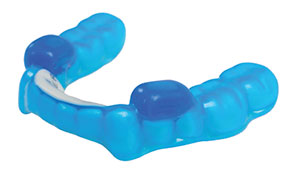Sleep Apnea
What is Snoring/OSA?
Snoring is the sound of partially obstructed breathing during sleep. While some snoring can be harmless, it can also be the sign of a more serious medical condition known as Obstructive Sleep Apnea (OSA). When Obstructive Sleep Apnea occurs, the tongue and soft palate collapse onto the back of the throat and completely block the airway, which restricts the flow of oxygen. The condition known as Upper Airway Resistance Syndrome (UARS), is midway between primary snoring and true obstructive sleep apnea. People with UARS suffer many of the symptoms of OSA but require special sleep testing techniques.
Dangers of Snoring/OSA
Both snoring and obstructive sleep apnea can be underlying factors in hypertension, congestive heart failure, heart attack, stroke, fatigue-related motor vehicle and work accidents and an overall decreased quality of life. Other side effects may also include excessive daytime sleepiness or fatigue, memory problems, weight gain, impotence, and headaches.
In addition, recent studies are now pointing out that the medical conditions of Chronic Fatigue Syndrome and Fibromyalgia are really undiagnosed sleep disorders.

Oral Appliance Therapy
Oral appliances that treat snoring and obstructive sleep apnea are small plastic devices that are worn in the mouth, similar to orthodontic retainers or sports mouth guards. These appliances help prevent the collapse of the tongue and soft tissues in the back of the throat, keeping the airway open during sleep and promoting adequate air intake. Currently, there are approximately 70 different oral appliances available. Oral appliances may be used alone or in combination with other means of treating OSA, including general health and weight management, surgery, or CPAP.
With so many different oral appliances available, selection of a specific appliance may appear somewhat overwhelming. Nearly all appliances fall into one of two categories. The diverse variety is simply a variation of a few major themes. Oral appliances can be classified by mode of action or design variation.
Oral Appliance Therapy involves the selection, fitting, and use of a specially designed oral appliance worn during sleep that maintains an opened, unobstructed airway in the throat.
Dentists with training in oral appliance therapy are familiar with the various designs of appliances. They can determine which one is best suited for your specific needs. The dentist will work with your physician as part of the medical team in your diagnosis, treatment, and on-going care. Determination of effective treatment can only be made by joint consultation of your dentist and physician. The initial evaluation phase of oral appliance therapy can take from several weeks to several months to complete. This includes examination, evaluation to determine the most appropriate oral appliance, fitting, maximizing adaptation of the appliance, and the function.
Advantages of Oral Appliance Therapy
Oral Appliance Therapy has several advantages over other forms of therapy:
- Oral appliances are comfortable and easy to wear. Most people find that it only takes a couple of weeks to become acclimated to wearing the appliance.
- Oral appliances are small and convenient making them easy to carry when traveling.
Treatment with oral appliances is reversible and non-invasive.
Other Treatment Options
In addition to lifestyle changes, such as good sleep hygiene, exercise and weight loss, there are three primary ways to treat snoring and sleep apnea. The most common way is with therapy delivered through a Continuous Positive Air Pressure machine. CPAP is usually applied through a tube to a mask that covers the nose. The air pressure that is generated splints the structures in the back of the throat, holding the airway open during sleep. Treatment can also be accomplished with surgery to the soft palate, uvula, and tongue to eliminate the tissue that collapses during sleep. More complex surgery can reposition the anatomic structure of your mouth and facial bones. Many of these procedures can be performed by an AADSM member trained as an oral and maxillofacial surgeon.
On-going Care
On-going care, including short- and long-term follow-up is an essential step in the treatment of snoring and Obstructive Sleep Apnea with Oral Appliance Therapy. Follow-up care serves to assess the treatment of your sleep disorder, the condition of your appliance, your physical response to your appliance, and to ensure that it is comfortable and effective.
